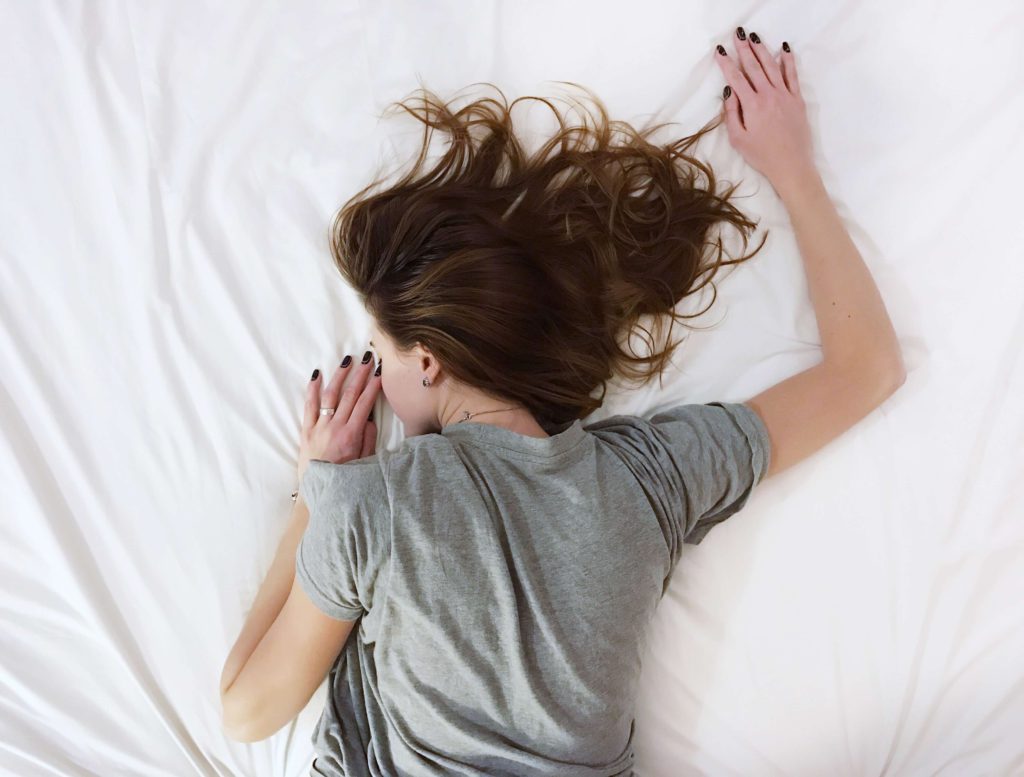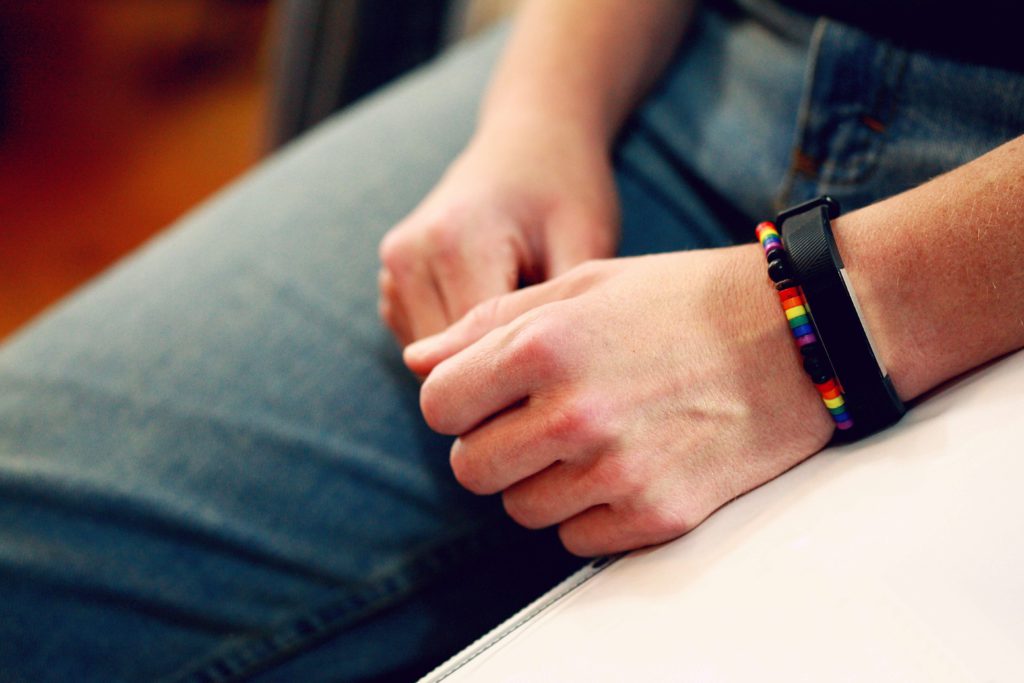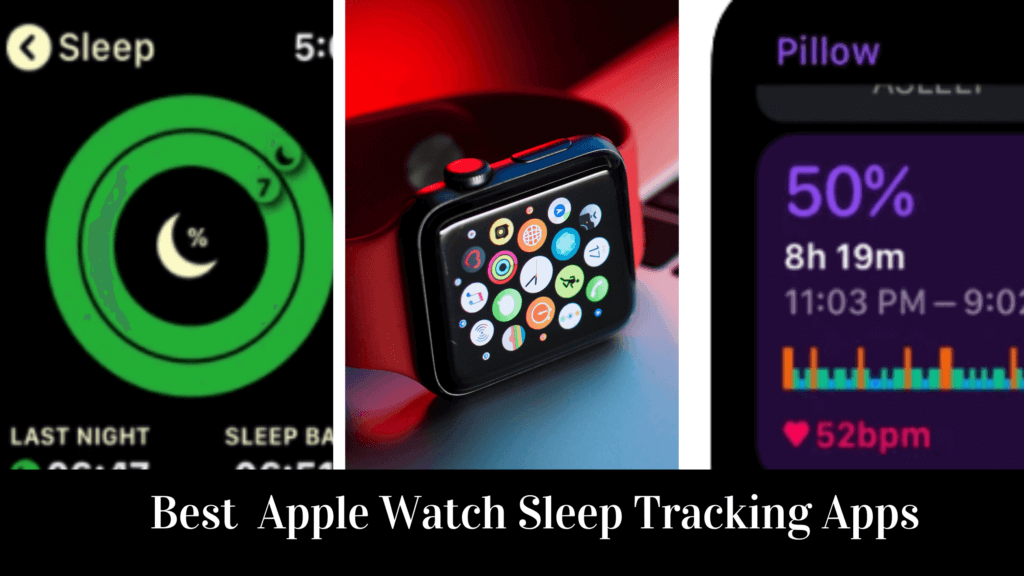The variety of sleep trackers is now so vast that you can find a device with almost any feature you want. Some have heart-rate monitors, others measure your movement, still others record your breathing. But to help you pick the best one for your needs, we’ve compiled a list of some of the most popular devices on the market, along with their price range and some pros and cons that come with each.
When you’re desperate for a good night’s sleep but can’t seem to find one, the answer is often right under your nose—or at least, just by slipping on a wristband that tracks your sleep cycles. The best sleep trackers use sophisticated technology to collect data about your sleeping habits and wake you up at the optimal time—before you even realize that you’re tired.

- Best Sleep Tracker for Apple Watch
- Does Apple Watch Track Your Sleep ?
- Which apple watch tracks sleep ?
It’s simple to compare sleep trackers by their basic functions—what they do best is what they should be compared on. Some of them are designed mainly as fitness trackers, so they won’t have as much information about your sleep patterns. Others might give you only a few weeks of battery life, which is a serious drawback if you need to recharge them daily or even more frequently.
You should look for an option that has an app for your smartphone that gives you enough information about your sleep habits that it will really help improve them—for example, if it gives you an overview of how many times you woke up in the night and when, and tells you the total number of hours in a night that you were asleep.
➡ The Best running app for Apple Watch: Free/Paid
The sleep tracker market is full of products promising to help you monitor and improve your sleep quality, but it’s hard to know which one is the best for you. The most important thing to consider is what exactly you need the tracker to do. If you’re looking for a simple device that will simply tell you how long you’ve slept, then it’s probably best to avoid the higher-end trackers that come with a variety of sensors and a complicated app interface.
These may not give you any more information than the cheaper devices that just calculate duration, but they also don’t offer much in the way of options or customization.
There are tons of different trackers on the market and it’s hard to know which is best for you, but there are a few things to look out for. Make sure that it’s comfortable—if you’re going to be wearing it to bed, you don’t want it to keep you awake by chafing or pinching. Look for a device that syncs with your computer and/or mobile device.
Some devices can only sync with the manufacturer’s sleep tracker app, which is fine if the app is user-friendly and easy to navigate, but other devices have multiple apps available and are compatible with Fitbit, Withings, Apple Health, or even all three apps at once. You might also want to ensure that the device has a major social media platform behind it—there are plenty of ways to share your sleep data on Facebook and Twitter.

When it comes to picking an activity tracker, there are a few things you’ll want to consider before making your purchase.
First, is this a device you will really use? If not, the money spent on the device won’t be worth it.
Second, what are some features that are important to you? A few things to consider include compatibility with your phone and apps, waterproof design, and battery life.
And lastly, how much does it cost? Is this something you’re willing to spend money on every month for a subscription or is one time payment more your speed?
Once you’ve narrowed down some options based on these criteria, there are still a few more things to think about when selecting the best sleep tracker for you. First of all, what kind of material do they offer? Do they have sensors that can detect movement while sleeping? Second of all, do they have an alarm clock?
- Consider your intended use.
- Figure out what sleep metrics you want to track.
- Do you want to know how much you toss and turn?
- Decide whether you want a wearable device or an app to track your sleep.
- If you’re looking for a wearable, consider comfort and convenience.
- Decide if you want a fitness tracker that also tracks sleep.
- Read other users’ experiences before choosing a tracker.
- Decide how much you want to spend.
- Understand the pros and cons of each type of sleep tracker.
- It is helpful to have accurate data about your sleep.
How sleep trackers work?
To choose the best sleep tracker, it helps to first know how they work. Many trackers use a sensor that detects your body’s motion, which is used to monitor your sleep cycles by measuring how much you move, the time you spend in deep versus light sleep, and how long it takes you to fall asleep.
There are two main categories of sleep trackers: wearables (such as a Apple Watch, Fitbit or Jawbone), and non-wearables (which analyze data from your smartphone). Wearable trackers tend to be more accurate — mainly because they take into account your heart rate — but they can be inconvenient for those who don’t want to wear anything near their face at night.
Non-wearables are less accurate since they rely on the accelerometer in your phone, but they’re also easier to use since you don’t have to wear something on your wrist or carry a separate device around with you.
A sleep tracker is a device that measures and analyzes your sleep in some way. This may include any combination of the following:
- Monitoring heart rate, breathing rate, or temperature during sleep
- Measuring light and sound exposure and correlating this to sleep patterns
- Recording movements and assessing how much time was spent in each sleeping position
- Guessing whether you’re awake or asleep based on your movement patterns
The most popular wearable sleep trackers are made by Fitbit, Garmin, Misfit, Jawbone and Withings. Apple Watch may be able to monitor some aspects of your sleep through its heart rate sensor, but not others, so it doesn’t really qualify as a sleep tracker.
From a scientific standpoint, “sleep trackers” (which includes wristbands like Fitbit’s Alta and Jawbone’s UP Move) have been around for decades. The first one was created in the mid ’60s by a man named Dr. Stuart Jacobson, who developed a device called an electroencephalograph (EEG) to measure the brain activity of his patients; this was later used as a diagnostic tool for epilepsy patients.
Jacobson’s design used wires attached to metal plates on a person’s scalp (similar to those used for electric shocks) that would send electrical signals from the brain to a monitor. By using EEGs, doctors could see which areas of the brain were active at certain times during sleep—and when they weren’t active, it indicated that the patient was unconscious (REM sleep).
Types of sleep trackers
There are two main types of sleep trackers: wearable and non-wearable. Wearable devices are usually small and can be worn like a watch or bracelet.
These produce more accurate results because they can monitor your entire body and not just your wrist or arm, like most non-wearable devices. You may want to consider a wearable device if you want more information than just how long and how well you slept, such as heart rate and blood oxygen levels during sleep.
Non-wearables are devices that can’t be worn; they’re usually placed directly on top of your mattress.
These devices tend to be less accurate than wearable devices because they don’t have contact with the body; however, these can be beneficial if you just want to know how long you slept or how well you slept, without all of the extra information that comes with a wearable device. If you’d like to know whether your sleep is restless throughout the night but don’t care about what your heart rate is while you sleep, then a non-wearable device is best for you.
When you hear the word “sleep tracker,” you might think of a wearable device that measures the quality of your sleep, such as a Fitbit or a Jawbone Up. These devices can be worn throughout the day and night, and they’ll track your movements, sleep patterns, heart rate, and more. Some also have breathing exercises and guided meditations that are intended to help you fall asleep faster and get more restful sleep.
But these aren’t the only types of sleep trackers out there: there are also non-wearable options for tracking your sleep. These can be as simple as taking note of when you go to bed and wake up every day to when you’re recording data from a more complex system like the Zeo Personal Sleep Coach or the Aura sleep system.
The most common is with a wearable device on your wrist, like the Fitbit Versa, Apple Watch, or Garmin Vívosmart. But if you don’t want to wear something all night, there are other options. Some of these monitors work by slipping under your sheets, while others plug directly into the wall socket. Here’s a rundown of some of the most popular non-wearable sleep trackers:
The Withings Sleep is one of the first and most affordable home fitness trackers. It automatically tracks your sleep and wake times as well as light and deep sleep cycles. It also has an easy-to-access app that helps you set and meet goals for stress management and overall health. The app allows you to connect with friends in order to motivate each other and share insights about your sleep patterns and habits.
You can also upgrade this device with a separate heart rate monitor that tracks your heart rate throughout the day, but more advanced features require an additional monthly subscription fee. The monitor comes in two sizes (smaller wrists, larger wrists) so it’s available for all shapes and sizes.
Wearable sleep trackers
Wearable sleep trackers are a great way to get a better understanding of your sleeping habits and help you improve your health. But they don’t come cheap. Most devices range from $50 to $1,000, so if you’re on the fence about getting one, you may be wondering if the price tag is worth it.
- Do I want to track my heart rate?
- Do I want to track my stress levels?
- Do I want to track my steps?
- What kinds of notifications do I want to receive? Can I trust them to be accurate when tracking my sleep?
- Is there a smartphone app that I can use with this device? Is it free? If not, how much will it cost me? Will I need to pay for any premium features? What exactly will those premium features do for me? Do they sound valuable enough that they’re worth what they cost me?
Is it comfortable? The last thing you want is for your device to be uncomfortable and disruptive to your sleep. You want to be able to put it on, go to bed, and forget about it until the morning. Is it accurate? Your tracker will only be as good as the sensors it has in place—if those sensors aren’t accurate or are prone to errors, that’ll seriously compromise the usefulness of your device. A wrist-worn sensor is ideal because they’re less likely than an armband or anklet model to move around while you’re sleeping and get out of position.
It’s not a new category—Fitbit has been tracking sleep for years—but it’s one that’s becoming an increasingly important part of the health and fitness ecosystem.
When it comes to sleep tracking, the Apple Watch has a leg up, with watchOS 7 allowing you to see how long you’ve slept, how many times you woke up, and how restless your sleep was.
If you want more details, however, the best product out there is Fitbit’s Sleep Stages. This tracker includes a combination of sensors and algorithms that track your stages of sleep and give you a detailed look at your night’s rest. The data is presented in a way that’s not only easy to understand but also motivational—you’ll be able to see how much time you spend in each phase of sleep as well as get statistics on how your own sleep habits compare to what’s normal for people of your age, weight and gender.
It’s not perfect; the tracker is most accurate if you wear it on your wrist, which might interfere with your sleep if you’re used to sleeping on the other side of your body (or if you’re used to sleeping with someone else).
There are plenty of ways to measure sleep, with some being more invasive than others. For example, you can use Fitbit’s app to manually enter how much time you slept and what your quality of sleep was like based on factors like how refreshed you feel, how long it takes to fall asleep, how many times you wake up, and how long you spend in deep sleep. But if you don’t have access to your phone or computer while you’re sleeping, or if you aren’t always willing to log into an app while still in bed, wearable sleep trackers can help you monitor your sleep habits without having to remember or set anything up in advance.
Sleep tracking Smartphone apps

You’ve probably heard a lot about the potential health benefits of getting enough sleep. It keeps your mind alert and prevents you from becoming too irritable or depressed, it helps you maintain a healthy weight, and it can even stave off diseases like diabetes, stroke, and heart disease.
A major factor in whether or not you can get enough sleep is how easy it is to nod off at the end of the day. If you find yourself tossing and turning for hours before you’re able to fall asleep each night, then your sleep quality might not be as high as it could be — which means that you might be missing out on some of those important health benefits.
So how can you make sure that your sleep is restful and peaceful every night? Well, you could go about this in a number of different ways — but thanks to our modern technology, there’s now another option to consider: sleep tracking apps.
These handy programs are designed to provide users with information about their sleep habits. They monitor your movements during the night using sensors in your phone (such as an accelerometer), and they can also keep track of ambient sounds using the microphone. Sleep tracking apps allow users to input data about their bedtime routines and habits, such as caffeine intake and naps.
Sleep tracking apps generally monitor your movements and ambient sounds (e.g., snoring, coughing, etc.) to determine your sleep quality—usually with a rating on a scale of one to five stars.
But before you start relying on your phone as a diagnostic tool, it’s important to keep in mind that there are limitations to this type of sleep tracking.
Apps like SleepScore and AutoSleep rely on accelerometers attached to the phone or placed under the pillow; research has found that these sensors can produce inaccurate readings when lying on the stomach or sides—which is more than half the population at any given time.
Additionally, there are several factors that could be affecting your performance: noises from outside or nearby rooms, use of electronics right before bed, even caffeine consumption too close to bedtime. So if you’re concerned about your ability to fall asleep or stay asleep, check out apps like SleepScore and AutoSleep as a starting point — but don’t rely solely on them for accurate readings.
Contactless sleep tracking gadgets
If you’re not into wearables and smartphone apps, there are a few other options to track your sleep. One class of products consists of contactless sleep trackers that can be set up on one’s bed.
These primarily consist of mattress mats, smart beds, and bedside monitors that can track your movements, heart rate, breathing pattern, and even how much you toss and turn at night. Contactless sleep trackers can be attractive options for people who want a truly unobtrusive tracker—but beware: these can be much more expensive than wearables and apps.
The primary benefit of contactless sleep trackers is their low profile. The most popular kind of contactless sleep tracker is the mattress mat. A mattress mat typically consists of a thin strip placed under the fitted sheet (or it might come with an adjustable sheet that goes over top) that’s covered with electrodes that monitor your sleeping patterns.
There are also contactless sleep trackers with sensors built into a traditional mattress or into a box spring itself. The sensors are often buried in the mattress or lined up along the box spring’s side rail. That way, they’re out of sight to prying eyes but still able to collect data about your sleeping habits.
